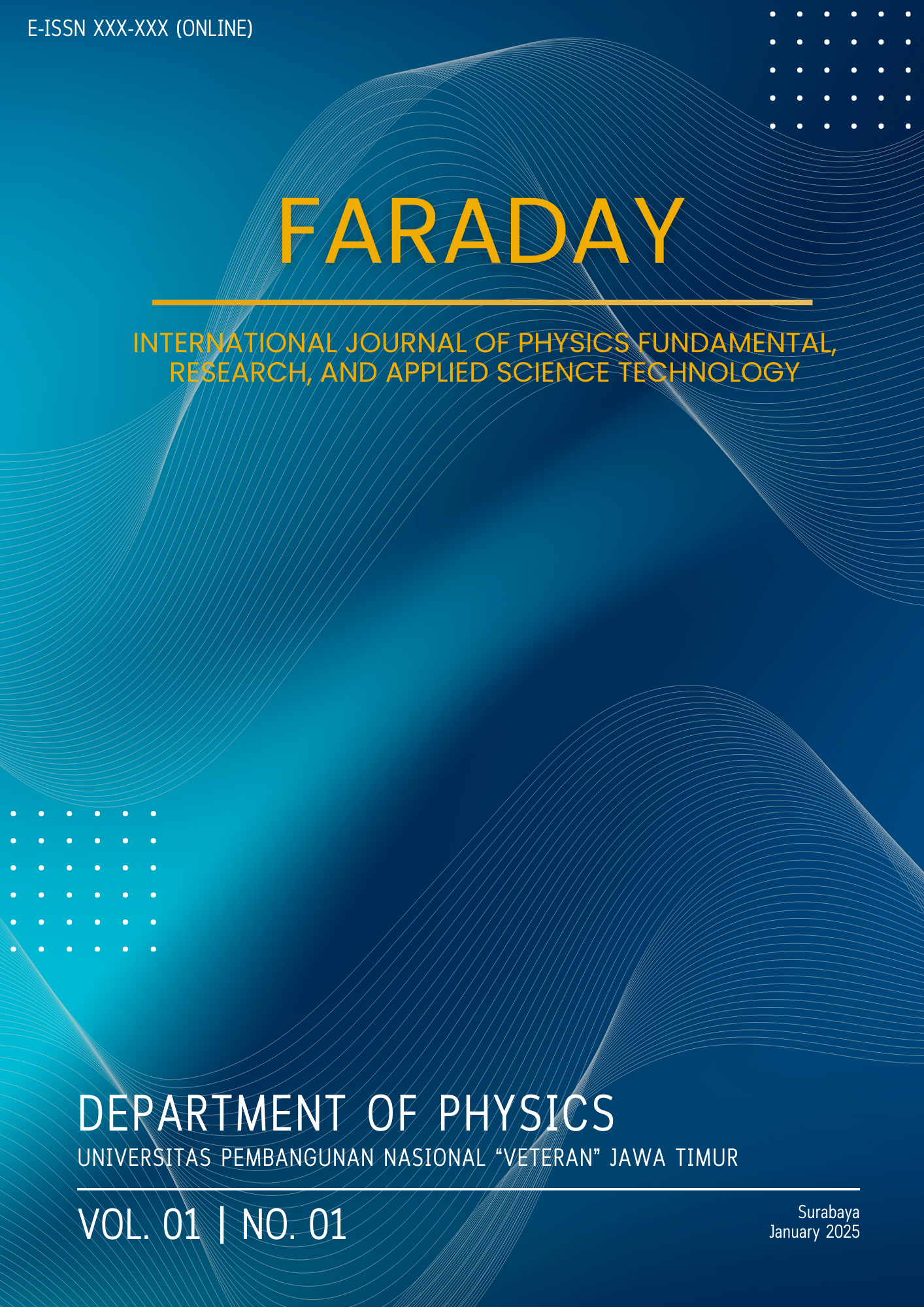Monitoring of Raw and Treated Water Quality Based on Nitrate Parameter at Ngagel Water Treatment Plant Using Spectrophotometry Method
DOI:
https://doi.org/10.33005/faraday.v1i1.6Keywords:
Nitrate, water quality, Spectrophotometer, PDAM Surya Sembada NgagelAbstract
This research focuses on monitoring the water quality at the Ngagel Water Treatment Plant in Surabaya by analyzing the nitrate (NO₃⁻) content in both raw and treated water. Nitrate is a key indicator of water pollution, often originating from agricultural runoff, sewage, and industrial discharge. Samples were collected monthly from January to March 2024 at two locations: the raw water intake from the Surabaya River and the treated water output ready for distribution. Laboratory testing using spectrophotometric methods showed that nitrate levels in raw water ranged between 2.44 mg/L and 3.50 mg/L, while treated water showed a slightly lower range between 2.00 mg/L and 3.00 mg/L. These results indicate a consistent reduction in nitrate concentrations after treatment, demonstrating the efficiency of the Ngagel Water Treatment Plant’s processes. Importantly, all measured values were significantly below the maximum allowable limit of 50 mg/L, as stated in the Indonesian Ministry of Health Regulation No. 492/MENKES/PER/IV/2010. This confirms that the treated water is safe for human consumption with regard to nitrate levels. The study highlights the importance of continuous water quality monitoring to ensure public health protection and to maintain the effectiveness of water treatment facilities over time.
Downloads
References
Arnanda, R., 2023. Analisis Kadar Nitrat dalam Air Sungai dengan Menggunakan Spektrofotometer UV-Visible. J. Kolaboratif Sains 6, 181–184. https://doi.org/10.56338/jks.v6i3.3357
Atikah, U., Purnaini, R., Asbanu, G.C., 2023. Analisis Kualitas Air Baku dan Kualitas Air Hasil Produksi pada Instalasi Pengolahan Air (IPA) Unit Mukok PDAM Tirta Pancur Aji Kota Sanggau. J. Teknol. Lingkung. Lahan Basah 11, 297. https://doi.org/10.26418/jtllb.v11i2.64525
Krisno, W., Nursahidin, R., Sitorus, R.Y., Ananda, F.R., 2021. PENENTUAN KUALITAS AIR MINUM DALAM KEMASAN DITINJAU DARI PARAMETER NILAI PH DAN TDS.
Mardiyono, M., 2021. PENETAPAN KADAR ASAM SIANIDA PADATALAS (Colocasia esculenta) DENGANVARIASI WAKTU PERENDAMAN SECARA ARGENTOMETRI. J. Anal. Farm. 5, 30–37. https://doi.org/10.33024/jaf.v5i1.3976
Mudasir, E.T.W., n.d. Metode Spektrometri. 15 Maret 2024.
Peraturan Pemerintah Republik Indonesia Nomor 22 Tahun 2021, TENTANG PENYELENGGARAAN PERLINDUNGAN DAN PENGELOLAAN LINGKUNGAN HIDUP, Presiden Republik Indonesia
Permenkes No 2 Tahun 2023. BERITA REPUBLIK INDONESIA, Kementrian Kesehatan Republik Indonesia
Downloads
Published
Issue
Section
License
Copyright (c) 2025 Oka Akbar Sudrajat, Primasari Cahya Wardhani, Fajar Timur, Rizky Pravitasari, Reffany Choiru Rizkiarna, Devina Rayzy Perwitasari

This work is licensed under a Creative Commons Attribution 4.0 International License.














